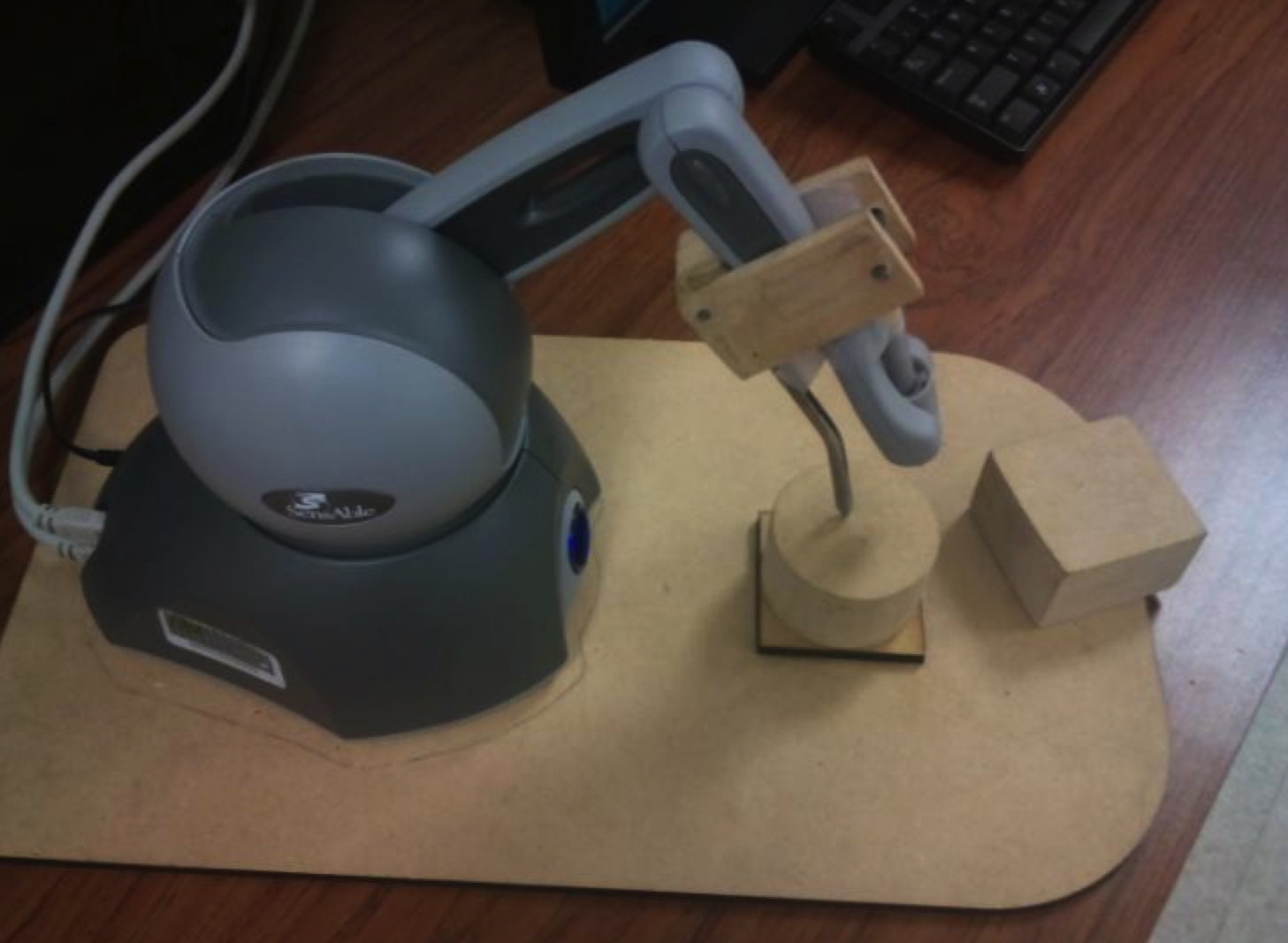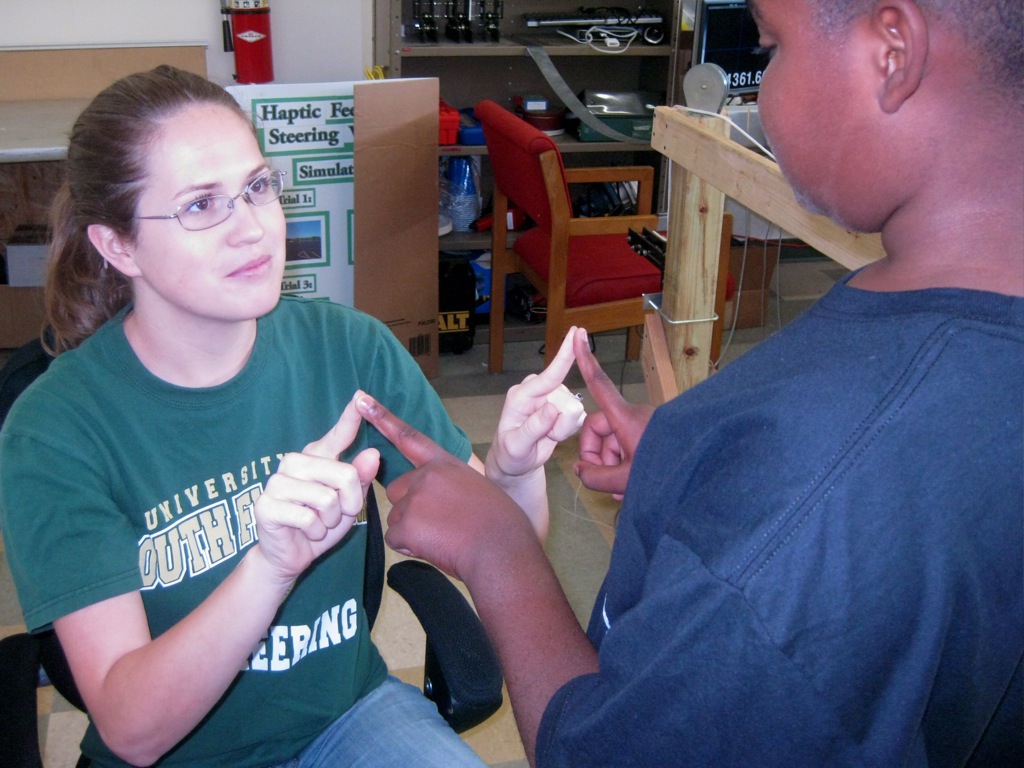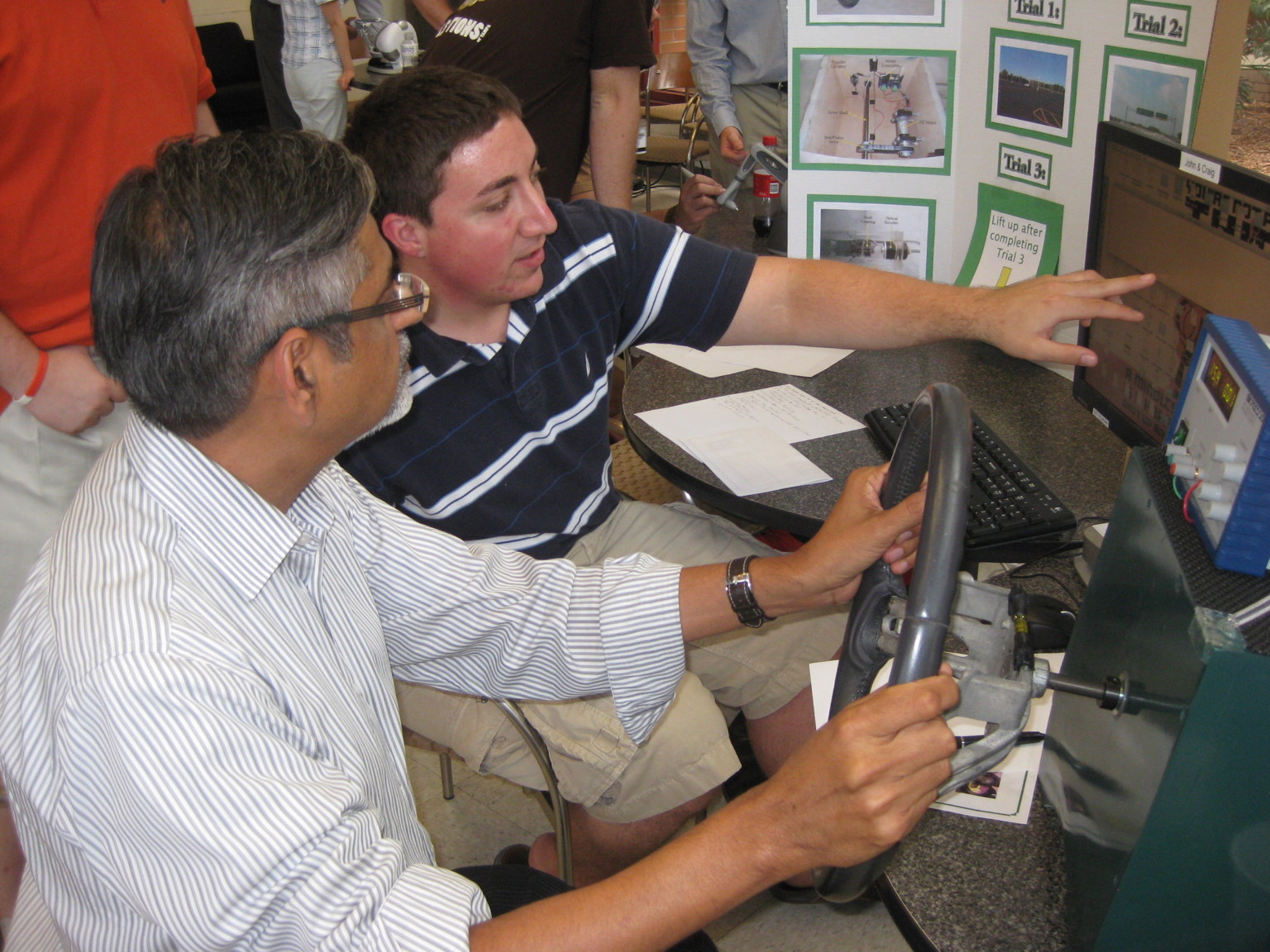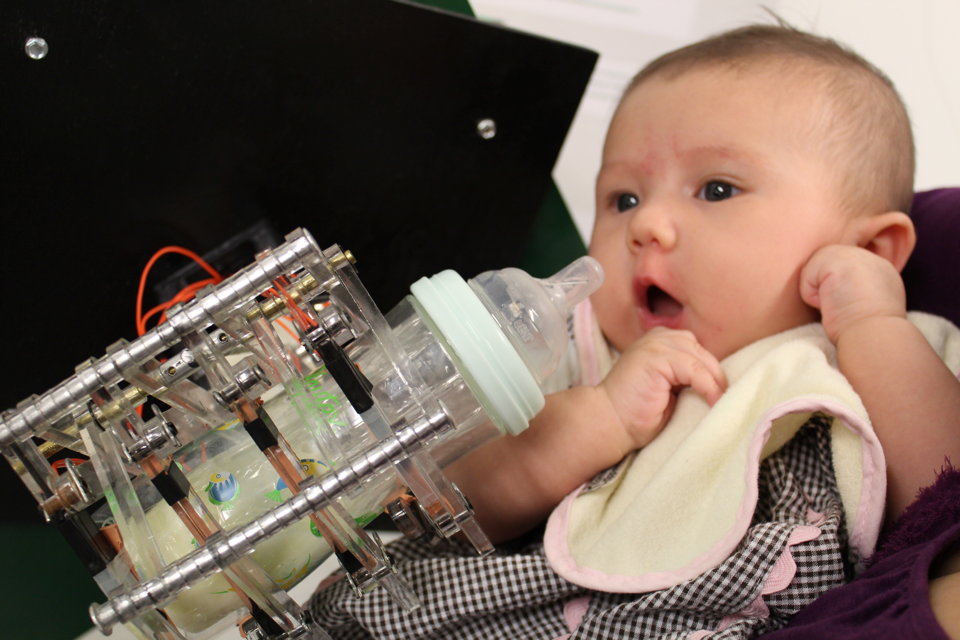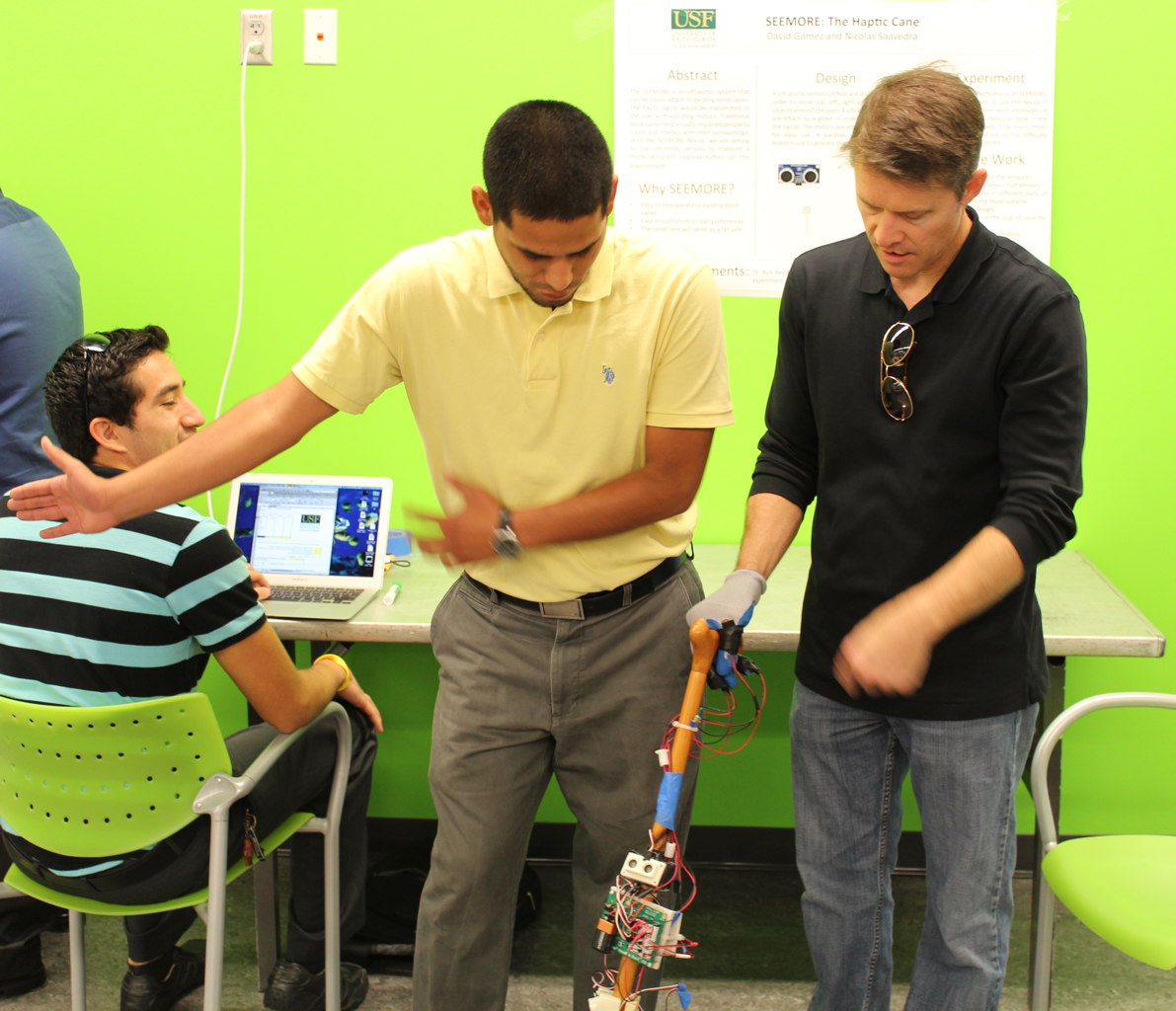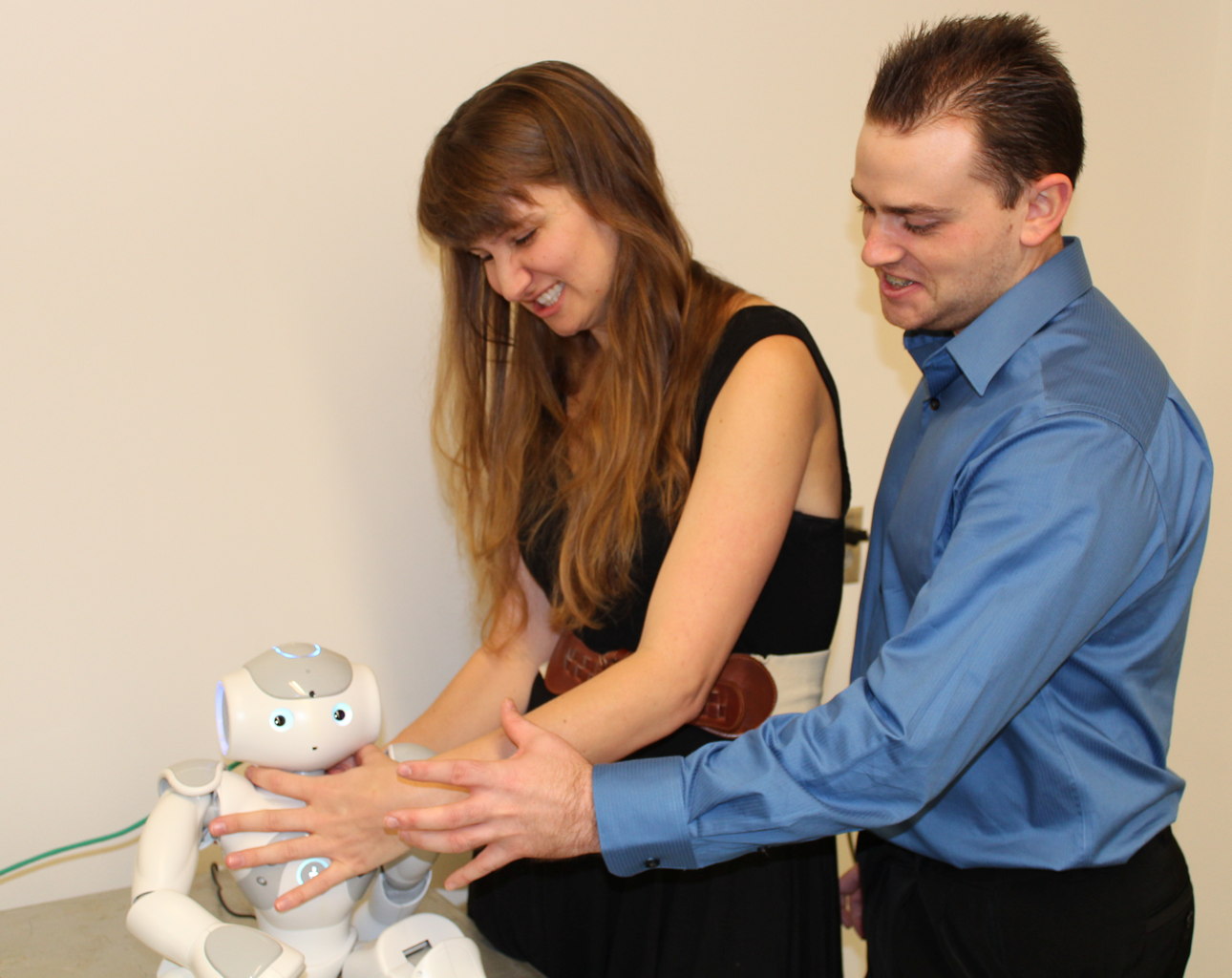Haptics (EML 4593/6594)
Reach into a pocket full of change and take out a dime. How did you know it was not a penny or a quarter? Can you perform this same task if you put gloves on? Probably not since you have lost the haptic sense and can no longer feel the difference between the coins.
This class will introduce the field of haptics as it relates to creating touch feedback in simulated and virtual environments. You will learn about human haptic sensing and control, haptic interfaces (tactile and force), teleoperation, haptic rendering, modeling, control and stability of virtual environments, and how to implement these in hardware.
The Haptics class serves as an elective for undergraduate or graduate students interested in robotics, biomechanics, and related fields. Students from any field are welcome to enroll, but the course has an engineering focus, so students from the College of Engineering are likely to be best served by this course. Students from any major with adequate experience are welcome to enroll. Since Haptics is pervasive in many fields, enrolling non-engineering students would benefit the interdisciplinary nature of Haptics.
Prerequisites:
There are some prerequisites listed, but talk to Dr. Reed if you are lacking one of them as they are not strictly required in many cases. It will be determined on a case-by-case basis, so don't let them keep you from taking the course.
Objectives:
The objectives of the class is for students to learn how to design systems that enable force and tactile feedback of virtual environments. The students will learn how humans perceive real objects to learn the salient properties that are necessary to be recreated in virtual environments. Programming will be done using Matlab, C++, and Arduino (seems like a lot, but the syntax is similar between all three and having experience with three languages is beneficial).
Learning Outcomes:
After completing this course, students will be able to describe the mechanoreceptors found in the human body and the neural pathways for incoming sensory perception and outgoing motor commands, which will be demonstrated by several quizzes throughout the course. Students will be able to apply this knowledge of human perception to design virtual and tactile systems that are able to recreate the effect of simulated objects, which will be demonstrated by a design project at the end of the course. Students will be able to understand current research in the field of Haptics, which will be demonstrated by in class discussions of recent studies found in conference and journal papers. Students will be able to implement virtual environments on Haptic devices, which will be demonstrated by homework assignments.
Major Topics:
Major course topics consist of the control/stability of feedback in virtual environments and robotic systems, haptic interfaces, teleoperation control systems, haptic rendering, modeling, human sensory cababilities, statistics, and programming.
Textbooks:
The course does not have a textbook. All of the required readings come from conference/journal papers and book chapters that are freely available as PDFs from the University library. The papers are updated yearly to teach the most recent information and come from conferences such as World Haptics or the Haptics Symposium and IEEE Transactions on Haptic.
Here are some of the readings for the class from past years:
Projects:
Particularly when learning about Haptics, it is important to experience the sensations, so the class is largely driven by the application of the theory learned during lecture. Part of this application is the class projects that incorporate the ideas covered in class. Each year, these projects are demonstrated at an open house at the end of the semester where students can show off their projects. Here are some photos of the past years: 2012, 2013, 2014, and 2015, and 2017 (more recent year's photos haven't been posted yet). Here are some details on some of the projects:
Student Expectations/Requirements and Grading Policy:
Homeworks (30%): There will be regular homeworks, some of which will involve programming assignments using several shared computers.
Project (35%): There will be one team-based semester project, culminating in a final report and a haptics demonstration. Progress and check points before the final due date will count toward the final grade.
Quizzes (15%): There will several quizzes throughout the semester, which will be announced ahead of time.
Class Participation (10%): Students must keep up with readings and actively participate in class discussions as participation will be graded.
Presentation (10%): The presentation is a detailed lecture on a topic related to haptics done individually, The presenter will also be responsible for preparing a short discussion or group activity related to the paper.
Grading policy: 90+ = A; 80-89.9 = B; 70-79.9 = C; 60-69.9 = D; <59.9 = F;
+/- grades may be assigned and the grades may be curved.
Semester taught:
The Haptics class is typically taught in the Fall semester.
Instructor:
Dr. Kyle B. Reed (website or lab website)
Associate Professor
Department of Mechanical Engineering
University of South Florida
Email: kylereed@eng.usf.edu
Phone: (813) 974-2385
More information can be found in the syllabus.
| 